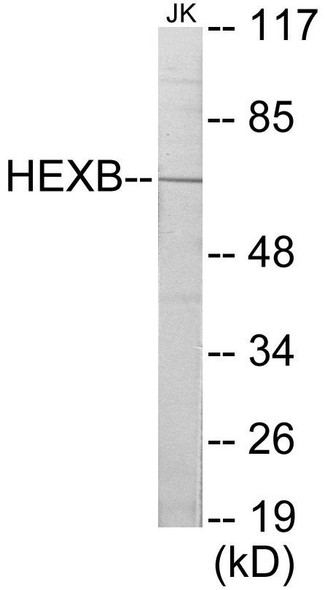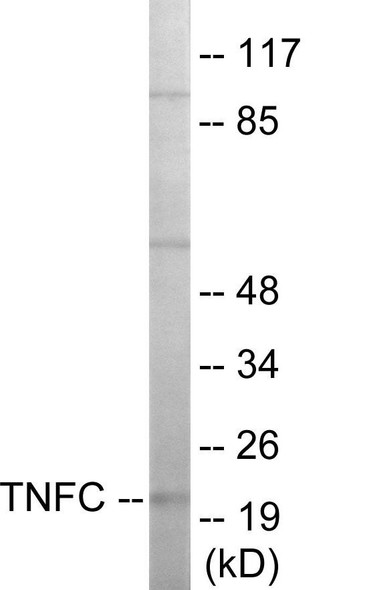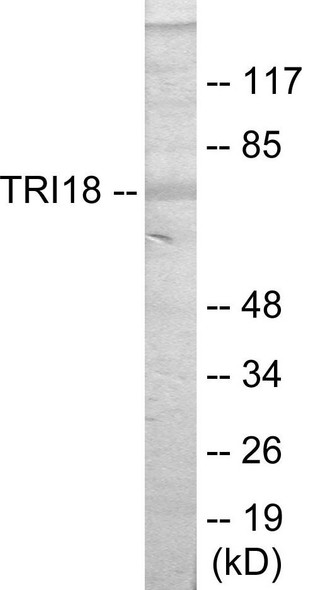Description
RhoH Colorimetric Cell-Based ELISA
The RhoH Colorimetric Cell-Based ELISA Kit is a reliable tool for quantifying the expression of RhoH protein in cell lysates. RhoH is a critical regulator of immune cell activation and signaling, making it a key target for studying immune responses and diseases such as autoimmune disorders and cancer. This kit offers high sensitivity and specificity, allowing for accurate and reproducible results. Its user-friendly design and simple protocol make it suitable for researchers of all levels.
By accurately measuring RhoH levels, researchers can gain valuable insights into the role of this protein in immune regulation and disease progression. Whether investigating basic cellular processes or developing novel therapeutics, the RhoH Colorimetric Cell-Based ELISA Kit provides researchers with a powerful tool for studying RhoH protein expression and its implications in various biological pathways.
| Product Name: | RhoH Colorimetric Cell-Based ELISA |
| Product Code: | CBCAB01113 |
| ELISA Type: | Cell-Based |
| Target: | RhoH |
| Reactivity: | Human, Mouse, Rat |
| Dynamic Range: | > 5000 Cells |
| Detection Method: | Colorimetric 450 nmStorage/Stability:4°C/6 Months |
| Format: | 96-Well Microplate |
The RhoH Colorimetric Cell-Based ELISA Kit is a convenient, lysate-free, high throughput and sensitive assay kit that can detect RhoH protein expression profile in cells. The kit can be used for measuring the relative amounts of RhoH in cultured cells as well as screening for the effects that various treatments, inhibitors (ie siRNA or chemicals), or activators have on RhoH.
Qualitative determination of RhoH concentration is achieved by an indirect ELISA format. In essence, RhoH is captured by RhoH-specific primary antibodies while the HRP-conjugated secondary antibodies bind the Fc region of the primary antibody. Through this binding, the HRP enzyme conjugated to the secondary antibody can catalyze a colorimetric reaction upon substrate addition. Due to the qualitative nature of the Cell-Based ELISA, multiple normalization methods are needed:
| 1. | A monoclonal antibody specific for human GAPDH is included to serve as an internal positive control in normalizing the target absorbance values. |
| 2. | Following the colorimetric measurement of HRP activity via substrate addition, the Crystal Violet whole-cell staining method may be used to determine cell density. After staining, the results can be analysed by normalizing the absorbance values to cell amounts, by which the plating difference can be adjusted. |
| Database Information: | Gene ID: 399, UniProt ID: Q15669, OMIM: 602037, Unigene: Hs.654594 |
| Gene Symbol: | RhoH |
| Sub Type: | None |
| UniProt Protein Function: | RHOH: Negative regulator of hematopoietic progenitor cell proliferation, survival and migration. Critical regulator of thymocyte development and T-cell antigen receptor (TCR) signaling by mediating recruitment and activation of ZAP70. Required for phosphorylation of CD3Z, membrane translocation of ZAP70 and subsequent activation of the ZAP70-mediated pathways. Essential for efficient beta-selection and positive selection by promoting the ZAP70-dependent phosphorylation of the LAT signalosome during pre-TCR and TCR signaling. Crucial for thymocyte maturation during DN3 to DN4 transition and during positive selection. Plays critical roles in mast cell function by facilitating phosphorylation of SYK in Fc epsilon RI-mediated signal transduction. Essential for the phosphorylation of LAT, LCP2, PLCG1 and PLCG2 and for Ca(2+) mobilization in mast cells. Binds GTP but lacks intrinsic GTPase activity and is resistant to Rho-specific GTPase-activating proteins. Inhibits the activation of NF-kappa-B by TNF and IKKB and the activation of CRK/p38 by TNF. Inhibits activities of RAC1, RHOA and CDC42. Negatively regulates leukotriene production in neutrophils. A chromosomal aberration involving RHOH is found in a non-Hodgkin lymphoma cell line. Translocation t(3;4)(q27;p11) with BCL6. Belongs to the small GTPase superfamily. Rho family. |
| UniProt Protein Details: | Protein type:G protein, monomeric, Rho; G protein; G protein, monomeric Chromosomal Location of Human Ortholog: 4p13 Cellular Component: cytoplasm; plasma membrane; immunological synapse; cytosol Molecular Function:protein binding; Rho GTPase binding; GTP binding; kinase inhibitor activity; GTPase inhibitor activity Biological Process: regulation of small GTPase mediated signal transduction; regulation of transcription, DNA-dependent; small GTPase mediated signal transduction; negative regulation of catalytic activity; negative regulation of phosphorylation; negative regulation of I-kappaB kinase/NF-kappaB cascade; mast cell activation; T cell differentiation |
| NCBI Summary: | The protein encoded by this gene is a member of the Ras superfamily of guanosine triphosphate (GTP)-metabolizing enzymes. The encoded protein is expressed in hematopoietic cells, where it functions as a negative regulator of cell growth and survival. This gene may be hypermutated or misexpressed in leukemias and lymphomas. Chromosomal translocations in non-Hodgkin's lymphoma occur between this locus and B-cell CLL/lymphoma 6 (BCL6) on chromosome 3, leading to the production of fusion transcripts. Alternative splicing in the 5' untranslated region results in multiple transcript variants that encode the same protein. [provided by RefSeq, May 2013] |
| UniProt Code: | Q15669 |
| NCBI GenInfo Identifier: | 2500200 |
| NCBI Gene ID: | 399 |
| NCBI Accession: | Q15669.1 |
| UniProt Related Accession: | Q15669 |
| Molecular Weight: | 191 |
| NCBI Full Name: | Rho-related GTP-binding protein RhoH |
| NCBI Synonym Full Names: | ras homolog family member H |
| NCBI Official Symbol: | RHOH |
| NCBI Official Synonym Symbols: | TTF; ARHH |
| NCBI Protein Information: | rho-related GTP-binding protein RhoH; GTP-binding protein TTF; TTF, translocation three four; ras homolog gene family, member H |
| UniProt Protein Name: | Rho-related GTP-binding protein RhoH |
| UniProt Synonym Protein Names: | GTP-binding protein TTF; Translocation three four protein |
| Protein Family: | Rho-related GTP-binding protein |
| UniProt Gene Name: | RHOH |
| UniProt Entry Name: | RHOH_HUMAN |
| Component | Quantity |
| 96-Well Cell Culture Clear-Bottom Microplate | 2 plates |
| 10X TBS | 24 mL |
| Quenching Buffer | 24 mL |
| Blocking Buffer | 50 mL |
| 15X Wash Buffer | 50 mL |
| Primary Antibody Diluent | 12 mL |
| 100x Anti-Phospho Target Antibody | 60 µL |
| 100x Anti-Target Antibody | 60 µL |
| Anti-GAPDH Antibody | 60 µL |
| HRP-Conjugated Anti-Rabbit IgG Antibody | 12 mL |
| HRP-Conjugated Anti-Mouse IgG Antibody | 12 mL |
| SDS Solution | 12 mL |
| Stop Solution | 24 mL |
| Ready-to-Use Substrate | 12 mL |
| Crystal Violet Solution | 12 mL |
| Adhesive Plate Seals | 2 seals |
The following materials and/or equipment are NOT provided in this kit but are necessary to successfully conduct the experiment:
- Microplate reader able to measure absorbance at 450 nm and/or 595 nm for Crystal Violet Cell Staining (Optional)
- Micropipettes with capability of measuring volumes ranging from 1 µL to 1 ml
- 37% formaldehyde (Sigma Cat# F-8775) or formaldehyde from other sources
- Squirt bottle, manifold dispenser, multichannel pipette reservoir or automated microplate washer
- Graph paper or computer software capable of generating or displaying logarithmic functions
- Absorbent papers or vacuum aspirator
- Test tubes or microfuge tubes capable of storing ≥1 ml
- Poly-L-Lysine (Sigma Cat# P4832 for suspension cells)
- Orbital shaker (optional)
- Deionized or sterile water
*Note: Protocols are specific to each batch/lot. For the correct instructions please follow the protocol included in your kit.
| Step | Procedure |
| 1. | Seed 200 µL of 20,000 adherent cells in culture medium in each well of a 96-well plate. The plates included in the kit are sterile and treated for cell culture. For suspension cells and loosely attached cells, coat the plates with 100 µL of 10 µg/ml Poly-L-Lysine (not included) to each well of a 96-well plate for 30 minutes at 37°C prior to adding cells. |
| 2. | Incubate the cells for overnight at 37°C, 5% CO2. |
| 3. | Treat the cells as desired. |
| 4. | Remove the cell culture medium and rinse with 200 µL of 1x TBS, twice. |
| 5. | Fix the cells by incubating with 100 µL of Fixing Solution for 20 minutes at room temperature. The 4% formaldehyde is used for adherent cells and 8% formaldehyde is used for suspension cells and loosely attached cells. |
| 6. | Remove the Fixing Solution and wash the plate 3 times with 200 µL 1x Wash Buffer for five minutes each time with gentle shaking on the orbital shaker. The plate can be stored at 4°C for a week. |
| 7. | Add 100 µL of Quenching Buffer and incubate for 20 minutes at room temperature. |
| 8. | Wash the plate 3 times with 1x Wash Buffer for 5 minutes each time. |
| 9. | Add 200 µL of Blocking Buffer and incubate for 1 hour at room temperature. |
| 10. | Wash 3 times with 200 µL of 1x Wash Buffer for 5 minutes each time. |
| 11. | Add 50 µL of 1x primary antibodies (Anti-RhoH Antibody and/or Anti-GAPDH Antibody) to the corresponding wells, cover with Parafilm and incubate for 16 hours (overnight) at 4°C. If the target expression is known to be high, incubate for 2 hours at room temperature. |
| 12. | Wash 3 times with 200 µL of 1x Wash Buffer for 5 minutes each time. |
| 13. | Add 50 µL of 1x secondary antibodies (HRP-Conjugated AntiRabbit IgG Antibody or HRP-Conjugated Anti-Mouse IgG Antibody) to corresponding wells and incubate for 1.5 hours at room temperature. |
| 14. | Wash 3 times with 200 µL of 1x Wash Buffer for 5 minutes each time. |
| 15. | Add 50 µL of Ready-to-Use Substrate to each well and incubate for 30 minutes at room temperature in the dark. |
| 16. | Add 50 µL of Stop Solution to each well and read OD at 450 nm immediately using the microplate reader. |
(Additional Crystal Violet staining may be performed if desired – details of this may be found in the kit technical manual.)






